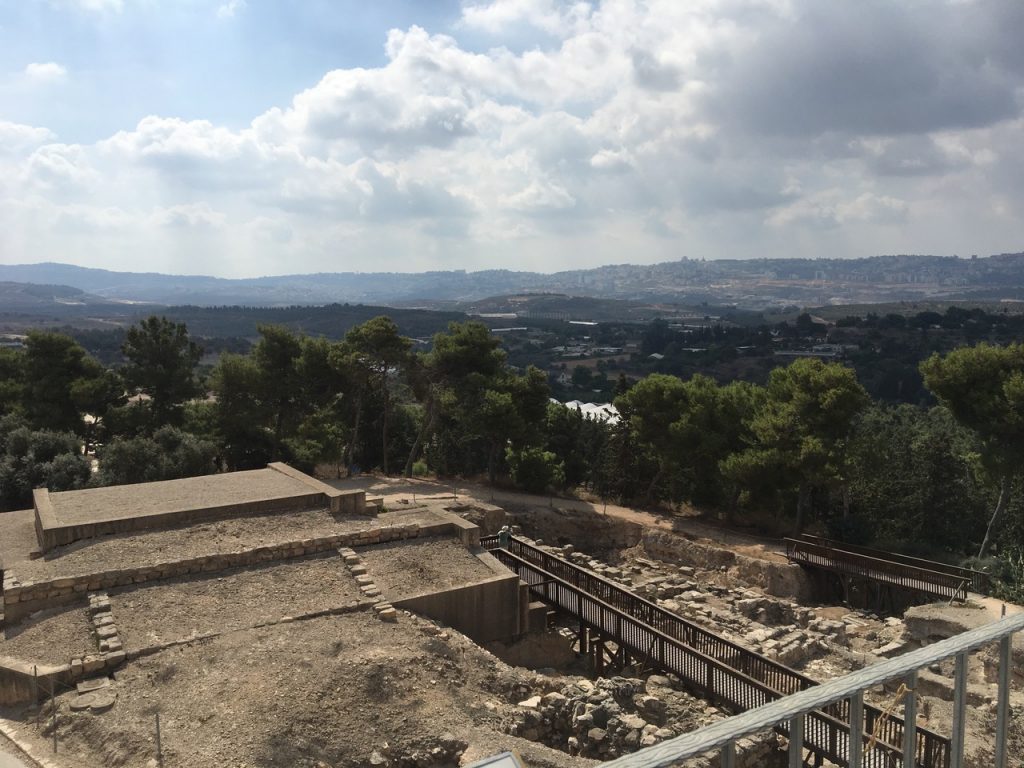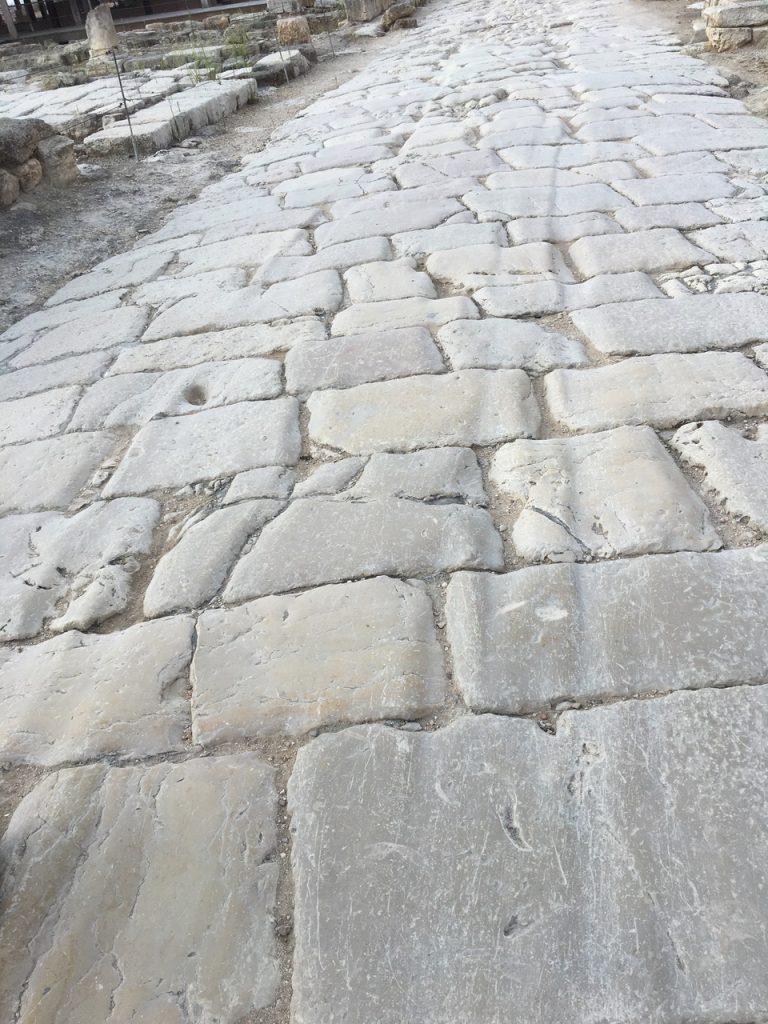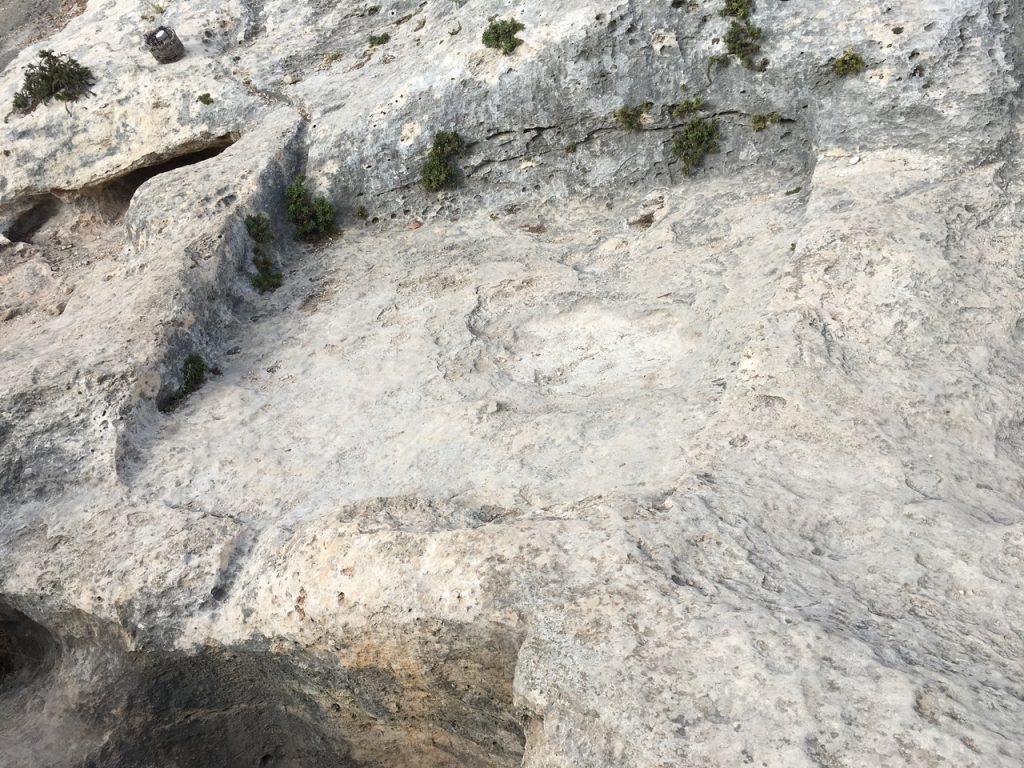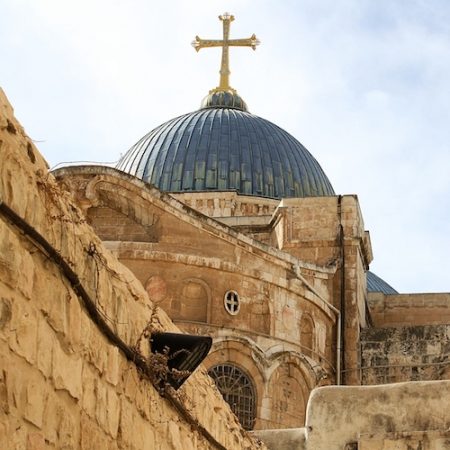Day 5 took us to the site of Sepphoris or Zippori, a town the first century Jewish/Roman historian Josephus described as “The ornament of all Galilee”
This romanised town had spring water and fertile lands enough to make it prosperous and important but its real interest to us is that it is in walking distance from Nazareth which can easily be seen across a low valley. This being so it is highly likely that Jesus and his father Joseph would have worked here on building related projects. Joseph is described in Greek as a ‘Tekton’ which is often translated as ‘carpenter’. However, it probably relates to a broader range of applied skills in both wood and stone.
Nazareth was a very small and newer town but nearby Sepphoris was a happening place with economic opportunities to offer. This would have been the place Jesus most likely encountered the influences of the wider world so what archeology has found there from the first century is of relevance.
We then moved on to Cana and the main commemorative site over ancient foundations. To be honest, I did not see anything that seemed relatable. The miraculous wine for sale did not appeal! As elsewhere, churches were built to mark the sites of many events but are of little critical value in themselves beyond marking a site.
From Cana we moved to Nazareth where again a substantial church marked the event of the Annunciation to Mary.
In Nazareth we went to ‘Nazareth Village‘ which is an attempt to reconstruct what Nazareth would have been like in Jesus’ day. The reconstruction was well informed and intended to compensate for the real archeology being layered under the main street of Nazareth several hundred meters away.
But then: archeology dug up gold!
A wine press was found on this reconstructed village site carved into rock – photo below. The depression in the rock is a pit for pressing wine with feet. What is clear is the outlet or drain channel in lower left allowing the pressed grape juice to flow into vats held in the hole cut out below the drain channel. Limestone rock was used as a mouldable material to form facilities we would make from metals, wood or plastics.
The deductions follow: towns typically had one winepress and this village reconstruction had exposed the rock which had been shaped into a wine press. If this was Nazareth’s winepress it is likely that Jesus knew of it and had been there and around it as a boy or teenager. This accidental discovery in Nazareth brought Jesus very near. This context explains why Jesus referred to grapes, vines and wine as something totally familiar to him and his hearers.

Looking over the ruins of Sepphoris towards Nazareth on the distant hill right of centre. Nazareth’s modern towers break the skyline. 
The ‘Cardo’ [=main north-south axis in Roman town] of Sepphoris clearly showing the wheel ruts of chariots from Jesus’ time. 
Rock wine press. Might Jesus have played here during grape harvest?
